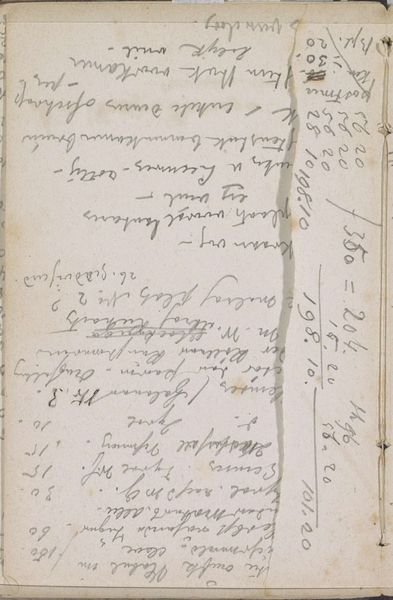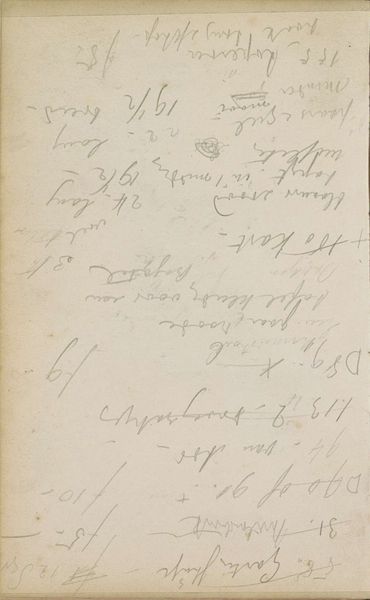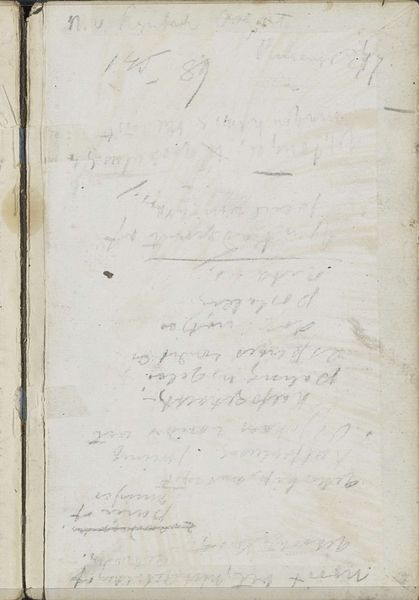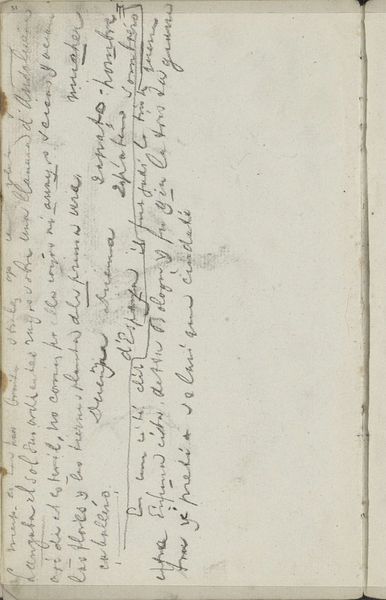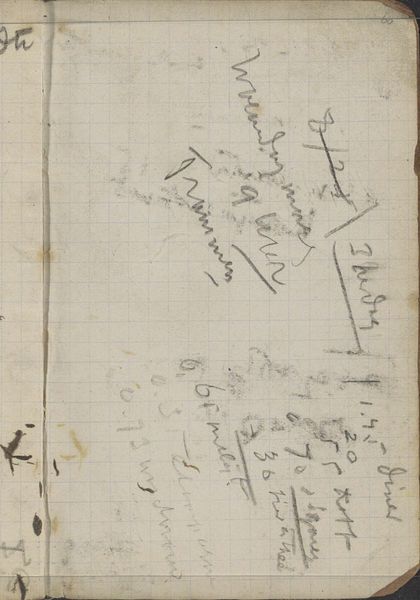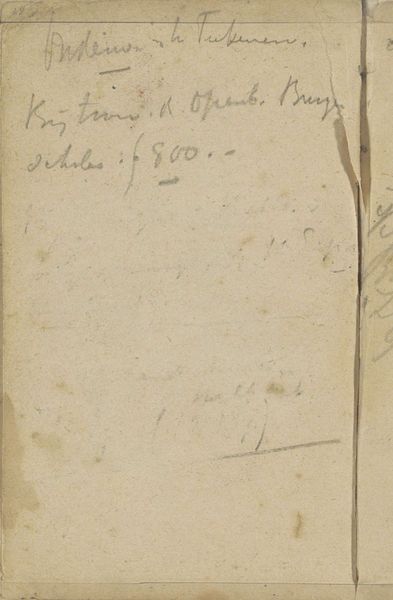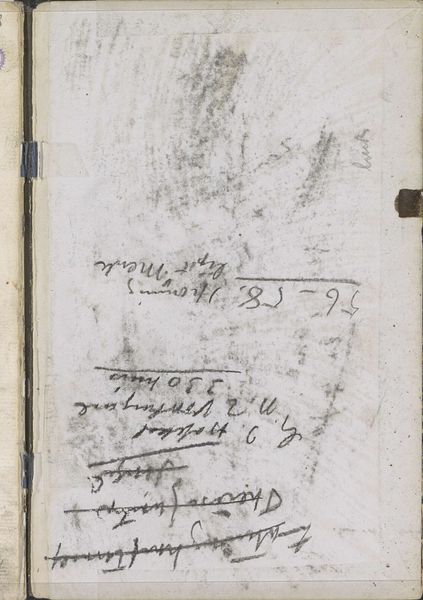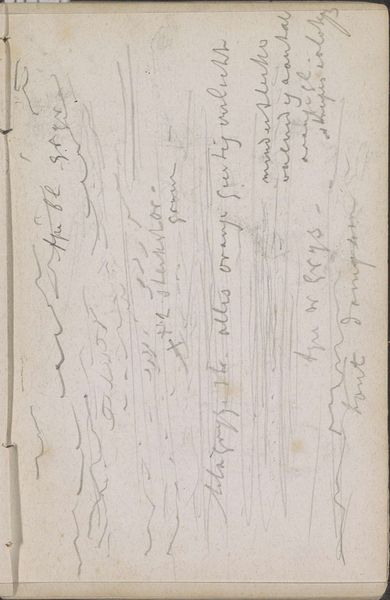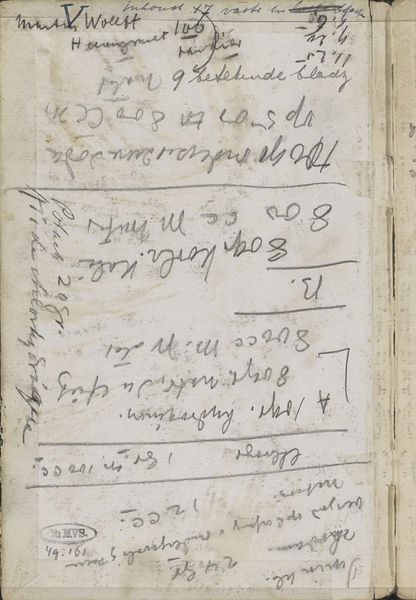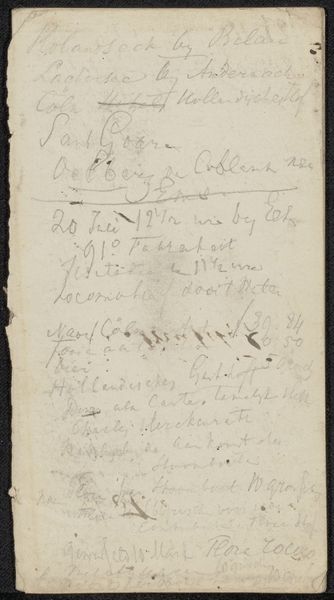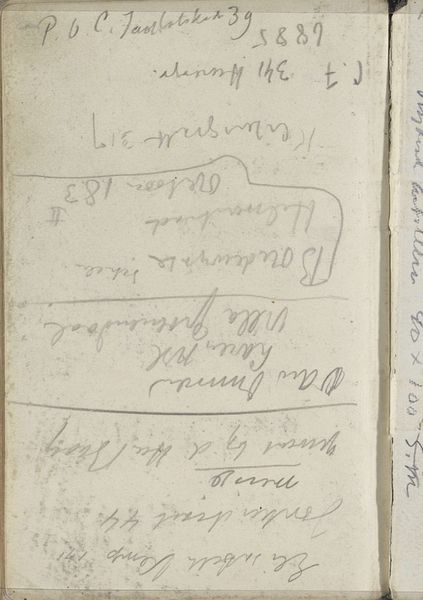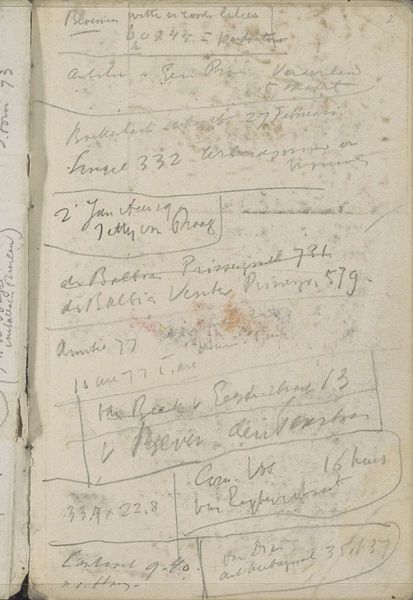
drawing, paper, ink
#
drawing
#
dutch-golden-age
#
paper
#
ink
#
intimism
Copyright: Rijks Museum: Open Domain
Curator: So, what's catching your eye about this piece? Editor: This is "Adressen" by Johannes Tavenraat, made between 1862 and 1864. It’s ink on paper. It looks like a page torn from a notebook. It’s very intimate, like a private document. I wonder what its purpose was. What do you see in it? Curator: For me, this drawing brings up questions about artistic labor and the marketplace. It's a glimpse into Tavenraat's working process, not as a display of skill but a functional record. Consider the materiality of the notebook itself, mass-produced paper and ink, commonplace items facilitating artistic production. The addresses listed point towards networks – suppliers, patrons, collaborators. Who are these people and what role did they play in the circulation and consumption of art? What about the act of writing, a skill intertwined with administration and commerce, being essential for artistic viability? Editor: So you're saying it isn’t just a list, but a peek into the economics of being an artist? I hadn't thought about it that way. The tearing of the page itself, does that add anything? Curator: Exactly. That tear – it signifies a detachment from the original context. This shifts it from a utilitarian object to a document meant for contemplation. Maybe that process creates art? Is this intentional, accidental, or both? These elements speak to a tension between the artist's creative vision and their need to operate within a commercial system. Editor: It’s fascinating how a seemingly simple list can reveal so much about the artist's world. I appreciate the reframing. Curator: Indeed! It underscores how deeply enmeshed artmaking is with the materials, processes, and social structures of its time.
Comments
No comments
Be the first to comment and join the conversation on the ultimate creative platform.
